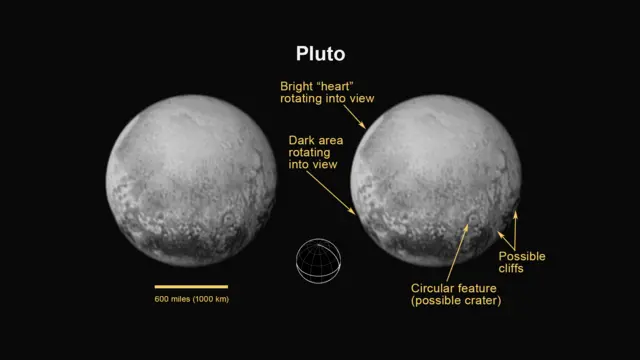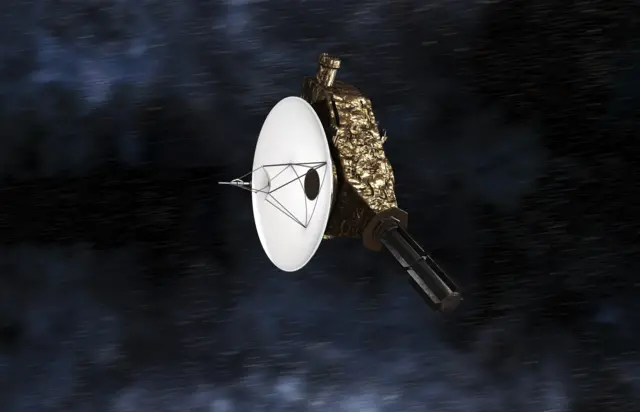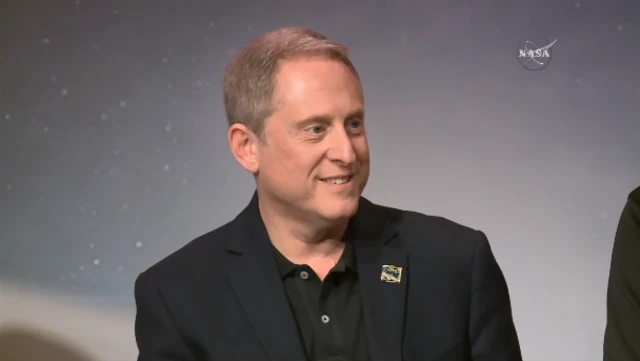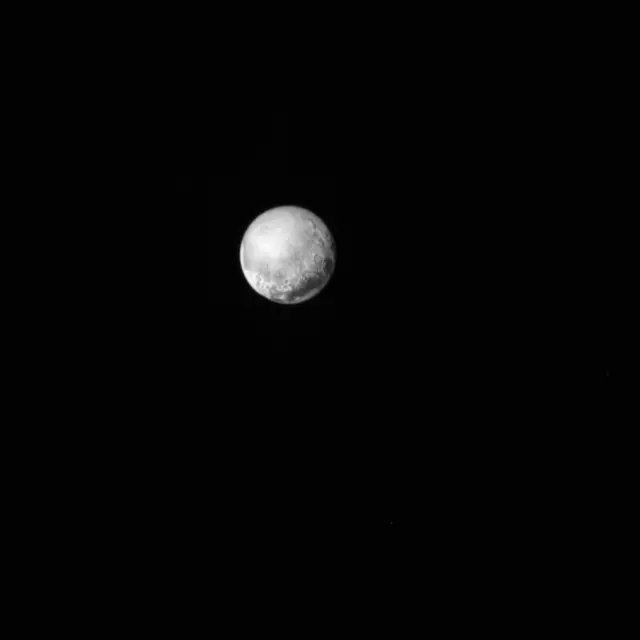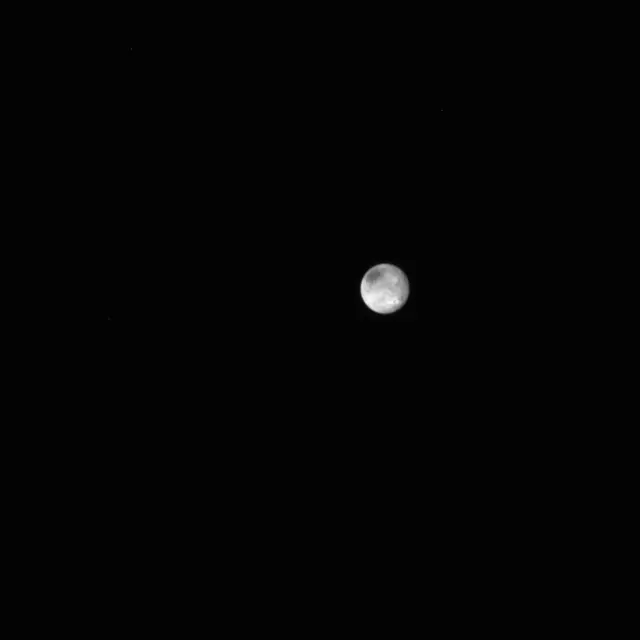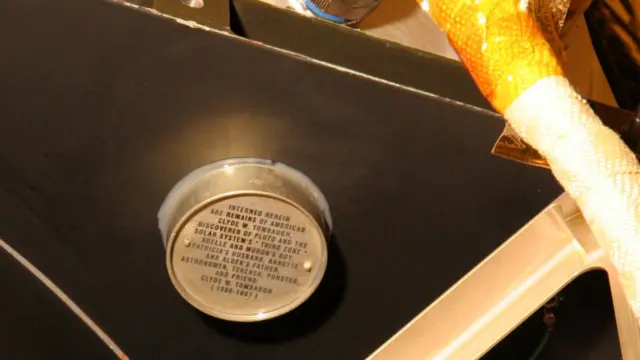'Money in the bank'published at 18:10
 Jonathan Amos
Jonathan Amos
Science correspondent, BBC News
New Horizons passed the "one million miles to go” mark in the early hours of Monday (GMT). It’s now under one million km from Pluto, for those of you like me who only really understand “new money”.
And the clock will run down very rapidly as New Horizons sweeps towards the Pluto system at 14km/s. Closest approach is set for 11:50 GMT (12:50 BST; 07:50 EDT) on Tuesday.
I wanted to share this mosaic that has been assembled by astro-photographer Damian Peach. It shows the growing disc of Pluto as New Horizons has got closer and closer in recent days.
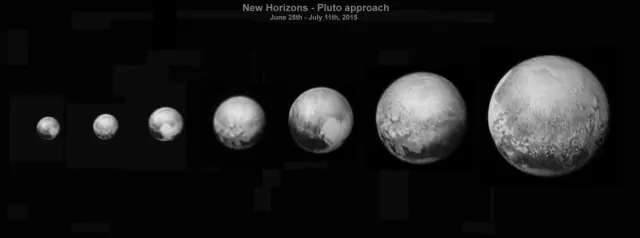 Image source, NASA/JHU-APL/SWRI – DAMIAN PEACH
Image source, NASA/JHU-APL/SWRI – DAMIAN PEACHThe face that is third from the right is the one that the probe will see as it passes just 12,500km above the surface. The best pictures that come back will have a resolution better than 100m per pixel.
This means you would be able to discern any football stadiums, if they were present on the dwarf planet. There aren’t any; I’m sure of that. But it gives you a sense of what to expect.
We’re not going to see the very highest resolution pictures immediately after flyby. However, the mission team is promising some spectacularly detailed views.
Watch out also on Tuesday for the last full-frame view of Pluto to be sent to the ground before New Horizons goes into radio silence for its flyby.
This is a "money in the bank” shot that will have been acquired on Monday. It’s an insurance policy in the highly unlikely event that the probe hits a small piece of icy debris during the flyby and is destroyed.
Because of the radio silence from New Horizons during the flyby, we won’t actually have anything new to show on Tuesday itself. So, Nasa will give us Monday’s "money in the bank” shot to tide us over.

